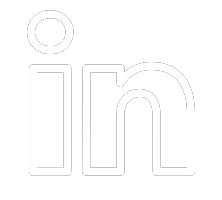Up to 90% Financing! Available for any project. Some restrictions apply. See Details

Template Talk
February 22, 2023
In today’s digital age, having a website is essential for businesses of all sizes. A website is your company’s online presence and acts as a hub for all your digital marketing efforts. But with so many website templates available online, it can be tempting to go for the cheaper and easier option. Website templates can be a tempting option for those who are new to web design or who need to create a website quickly and on a budget.
However, while templates may be a good starting point, they are not be the best option. While website templates may seem like a convenient solution, here are several reasons why you should think twice and never use them for your business.
Uniquely Lacking
One drawback of using website templates is that they can be overused, making it difficult to create a unique online presence. Many templates are designed to appeal to a broad audience, which can make it challenging to stand out. If you want your website to be memorable and distinct, it is better to invest in a custom design that reflects your brand’s personality and core values.
Limited Customization
Website templates often have design limitations that can be frustrating for those who have a specific vision for their website. Templates are difficult to modify, and most will not offer the functionality that you need to achieve your goals. If you are looking to create a website that is tailored to your unique needs, a custom design is the best option.
Unoptimized Code
Website templates come with bloated and unoptimized coding that slow down the performance of your website. This has a negative impact on the user experience, as slow load times lead to higher bounce rates and lower engagement. Additionally, poorly optimized codes hurt your website’s search engine rankings, as search engines prioritize fast-loading websites. If you want your website to perform well and provide a positive user experience, it’s way better to invest in a custom design that is optimized for speed and performance.
Security Risks
Another drawback of website templates is that they contain vulnerabilities that can be exploited. Templates are not updated regularly or are designed with security flaws that can put your website and your users at risk. This is a significant problem, as hacked websites can be costly to fix and can damage your reputation. If you want to ensure that your website is secure, a custom design is still the best option.
Lack of Support
Many website templates do not come with dedicated support, which means that if you run into problems, you may have to troubleshoot on your own. This can be challenging for those without a technical background, as website issues can be complex and time-consuming to resolve. If you want to ensure that your website is well-supported and maintained, a custom design may be a better option.
In conclusion, while website templates may seem like a good starting point for some people, they are not the best option. If you want to create a website that is truly unique, optimized for performance, and secure, a custom design is the investment you want to make. By working with a professional web designer and developer, you can create a website that reflects your brand’s personality and values, provides a positive user experience, and supports your business goals.
Check out our website for more information to help gain an even better understanding of what we do. Our website also includes endless amounts of successful projects and where our clients come from. On our website you will also have access to information on the members of our team. We are also active on social media accounts like Facebook, LinkedIn and Twitter providing more detail on what our goals are for the clients we work with. Let us help turn prospects into customers through awareness, consideration, conversion, and loyalty.
Social Networking
February 14, 2023
Social networking refers to the use of online platforms and websites to connect with other people, share information, and engage in social interactions. These platforms typically allow users to create profiles, share content such as photos and messages, and connect with other users through friend requests or follows. Some popular social networking sites include Facebook, Twitter, Instagram, and LinkedIn. The connection through these social media channels is what makes social networking so special and unique. While social networking can have many benefits, it can also pose risks that should not go unnoticed.
The Good
There are many benefits to social networking even beyond being connected with individuals who share interests with you. Social networking has the ability to go beyond the surface level and dive deeper.
● Connection with others-Social networking provides a way to connect with friends, family, and people with similar interests, no matter where they are in the world.
● Information sharing-Social networking platforms make it easy to share information, news, and updates with a large audience, which can be useful for raising awareness or promoting a cause.
● Community building-Social networking allows people to connect with others who share similar beliefs, interests, or backgrounds, which can help build a sense of community and belonging.
● Accessing resources-Social networking can provide access to valuable resources, such as job postings, educational opportunities, and industry news.
● Entertainment-Social networking can provide a source of entertainment, such as funny videos or interesting articles, which can help to alleviate stress and boredom.
The Bad
Although there are benefits to social networking, there are also negatives to this way of connection. Such as:
● Privacy concerns-Social networking platforms often require users to share personal information, which can be used for targeted advertising or even identity theft. Additionally, social media can make it difficult to control who has access to your personal information.
● Cyberbullying-Social networking can provide a platform for bullies to harass and intimidate others online. Cyberbullying can have serious consequences, including mental health issues.
● Addiction-Social networking can be highly addictive, which can lead to decreased productivity, procrastination, and even sleep deprivation.
● Spread of misinformation-Social networking can be a breeding ground for fake news and misinformation, which can be harmful to individuals and society as a whole.
● Comparison and low self-esteem-Social networking can create a culture of comparison, where people feel pressure to present a perfect image of themselves online. This can lead to low self-esteem and feelings of inadequacy.
The Ugly
Social networking is very unique in its ways of usefulness. Similar to other types of adequate connection building there are positives and negatives to social networking. Although, there is a side to social networking that other areas may not experience. The online world has a way of diminishing its users and refers to the most negative and extreme aspects of online interaction.
● Online harassment and hate speech-Social networking can provide a platform for individuals and groups to engage in hate speech, harassment, and even threats of violence towards others.
● Radicalization-Social networking can be used to spread extremist ideologies and recruit vulnerable individuals to join violent or extremist groups.
● Fake news and propaganda-Social networking can be used to spread false information and propaganda that can have serious consequences, such as fueling political polarization, inciting violence, or influencing elections.
● Exploitation and trafficking-Social networking can provide a platform for human traffickers and other criminals to exploit vulnerable individuals, particularly children and young adults.
● Mental health issues-Social networking can have a negative impact on mental health, particularly for young people who may experience extreme cyberbullying, social isolation, and chronic addiction. Additionally, it is proven that social media can exacerbate mental health issues such as depression and anxiety.
Effectiveness of Social Networking
To effectively use social networking there are a few tips you could follow to ensure you are on an accessible track. Define your goals while social networking to discover what you want out of this strategy. Be your authentic self and engage well with others for maximum benefit. Be sure to properly manage your privacy while maintaining your usage and avoiding overuse. When social networking, always fact check all the information before consuming and remember the importance of being respectful to others and yourself.
These effective social networking tips provide a better look at why social networking is so important in general. Social networking allows us to more easily connect with others as well as create and share content. Social networking helps build brand awareness by gathering feedback and insights all while having the ability to collaborate with others. Social networking is a useful tool and should be used correctly to maximize its potential.
Check out our website for more information to help gain an even better understanding of what we do. Our website also includes endless amounts of successful projects and where our clients come from. On our website you will also have access to information on the members of our team. We are also active on social media accounts like Facebook, LinkedIn and Twitter providing more detail on what our goals are for the clients we work with. Let us help turn prospects into customers through awareness, consideration, conversion, and loyalty.
Programming/Coding
February 9, 2023
In today’s digital world, programming and coding skills have become essential for a wide range of careers and industries. From software development and computer science, to finance, healthcare, and beyond, programming has become a critical tool for solving problems and creating innovative solutions. The evolution of programming and coding has been marked by several key trends and advancements over the years. The number of programming languages has increased, making it easier for developers to choose the right tool for the job. The development of modern development environments, such as integrated development environments (IDEs), has made coding more efficient and streamlined. The use of open-source libraries and frameworks has greatly reduced the amount of time required to develop complex applications, while the rise of cloud computing has made it possible to deploy and run large scale applications with ease.
Programming
Programming has come a long way since its discovery and inception. The field has evolved significantly, with advancements in hardware and software technology leading to the development of many new programming languages and tools. The increased accessibility to the internet has made it easier to share information, collaborate and learn new programming concepts. The use of programming has also expanded beyond traditional areas such as scientific computing and software development and is now being used to solve problems in a variety of domains, including healthcare, finance, and education. In short, programming has come a long way, and continues to evolve to meet the changing needs of the world.
Coding
Coding, which is a crucial part of programming, has also come a long way. The number of programming languages has increased, making it easier for developers to choose the right tool for the job. The development of modern development environments, such as integrated development environments (IDEs), has also made coding more mainstream. Additionally, the use of open-source libraries and frameworks has greatly reduced the amount of time required to develop complex applications. The rise of cloud computing has also made it possible to deploy and run large scale applications with ease. Overall, coding has become more accessible, efficient, and effective because of these advancements.
Evolution of Programming & Coding
Despite these advancements, the basics of programming and coding remain the same. The key to successful programming is understanding how to break down a problem into smaller, manageable parts and then using code to solve each part. This requires critical thinking skills, creativity, and an ability to learn and adapt to new technologies and programming languages. Whether you're just starting out in your programming career or looking to expand your skills, there are many resources available to help you learn. From online courses and tutorials, to coding bootcamps and formal computer science programs, there are many paths to building your programming and coding skills. In conclusion, programming and coding are essential skills in the digital age. Whether you're looking to pursue a career in software development, or simply want to learn how to code for personal projects, the opportunities for growth and innovation in this field are virtually limitless.
Check out our website for more information and to help gain an even better understanding of what we do. Our website also includes endless amounts of successful projects and where our clients come from. On our website you will also have access to information on the members of our team. Lastly, be sure to follow us on all our social media accounts (Facebook, LinkedIn and Twitter) providing more detail on what our goals are for the clients we work with. Let us help turn prospects into customers through awareness, consideration, conversion, and loyalty.




